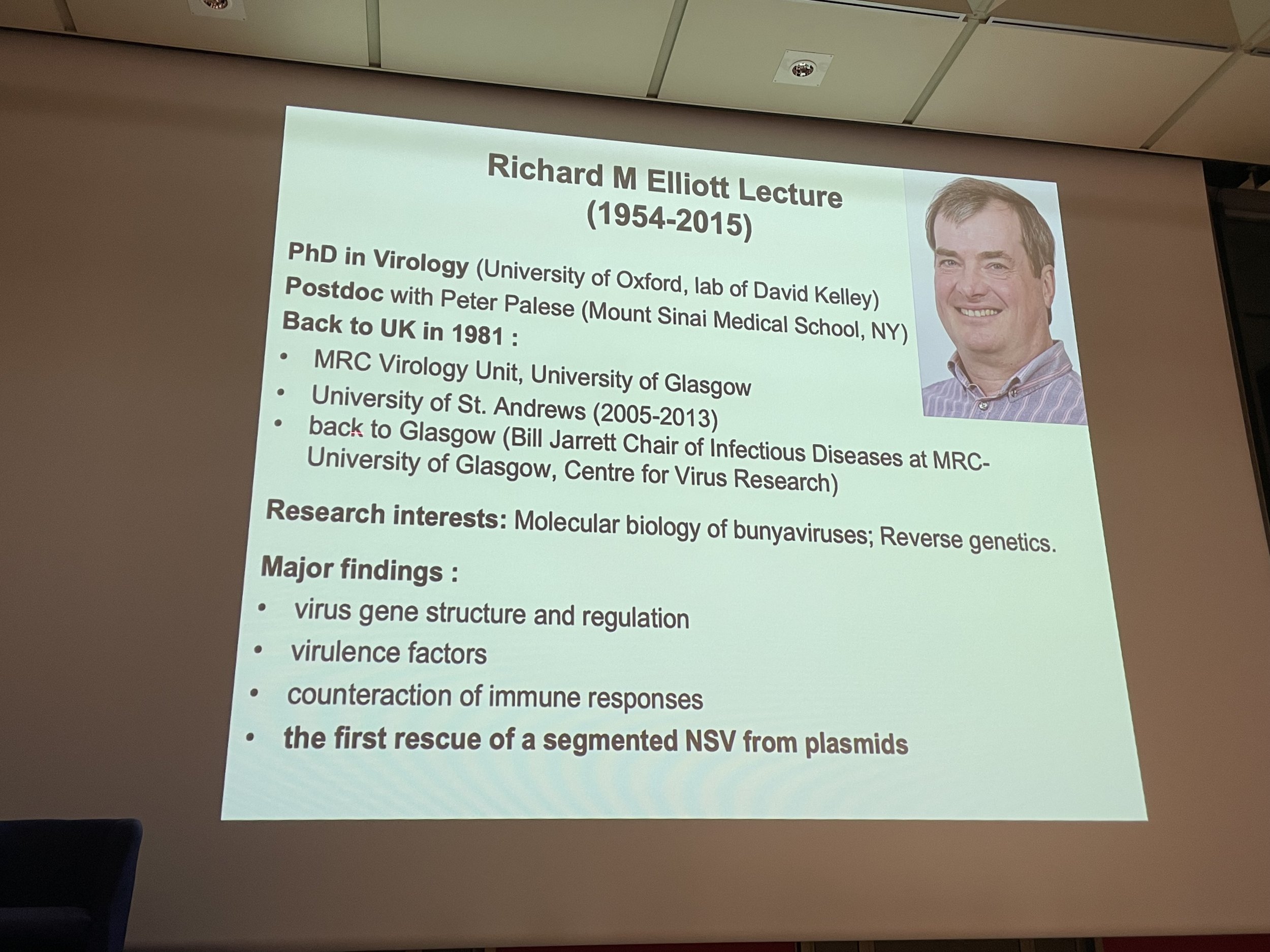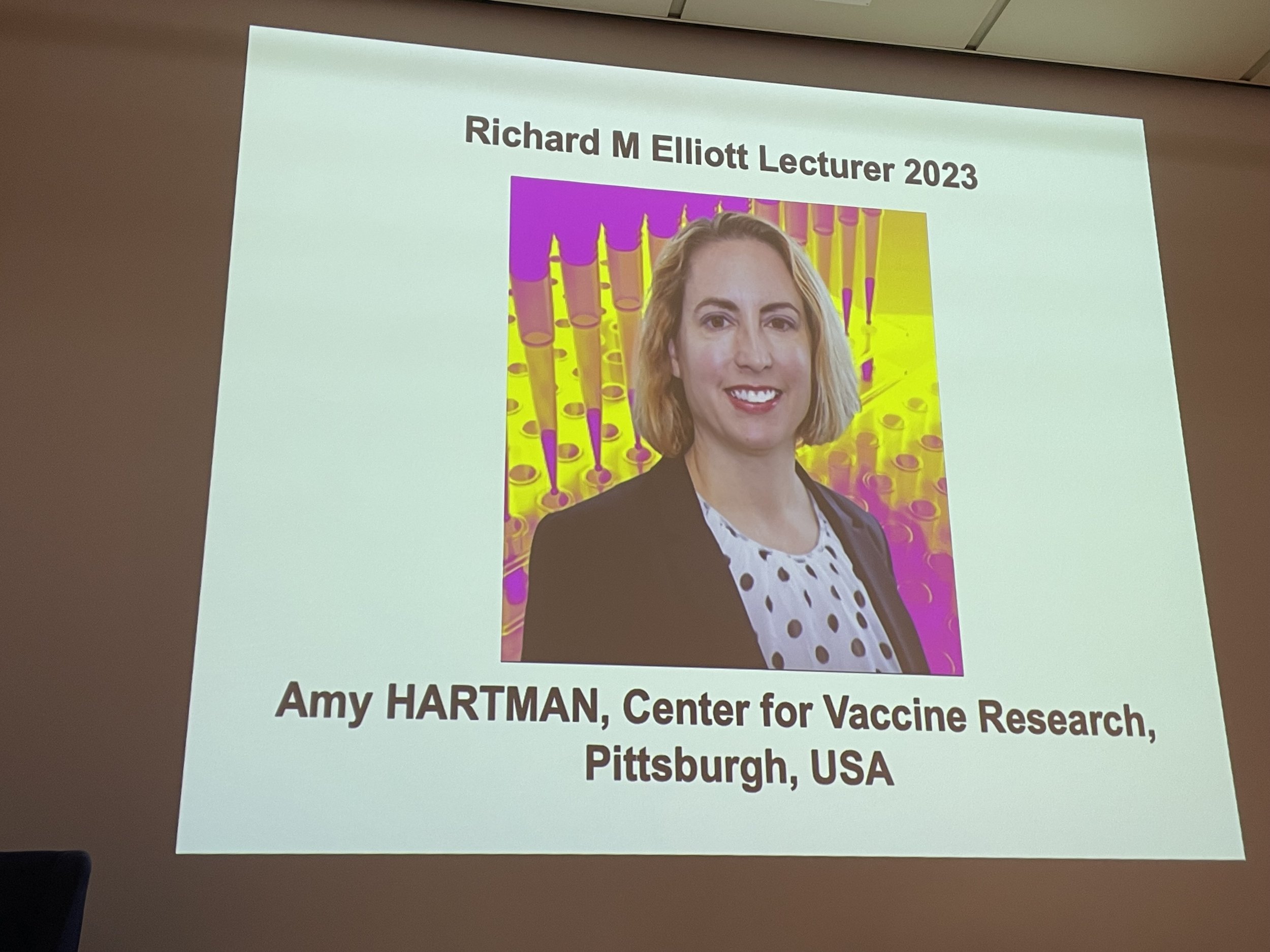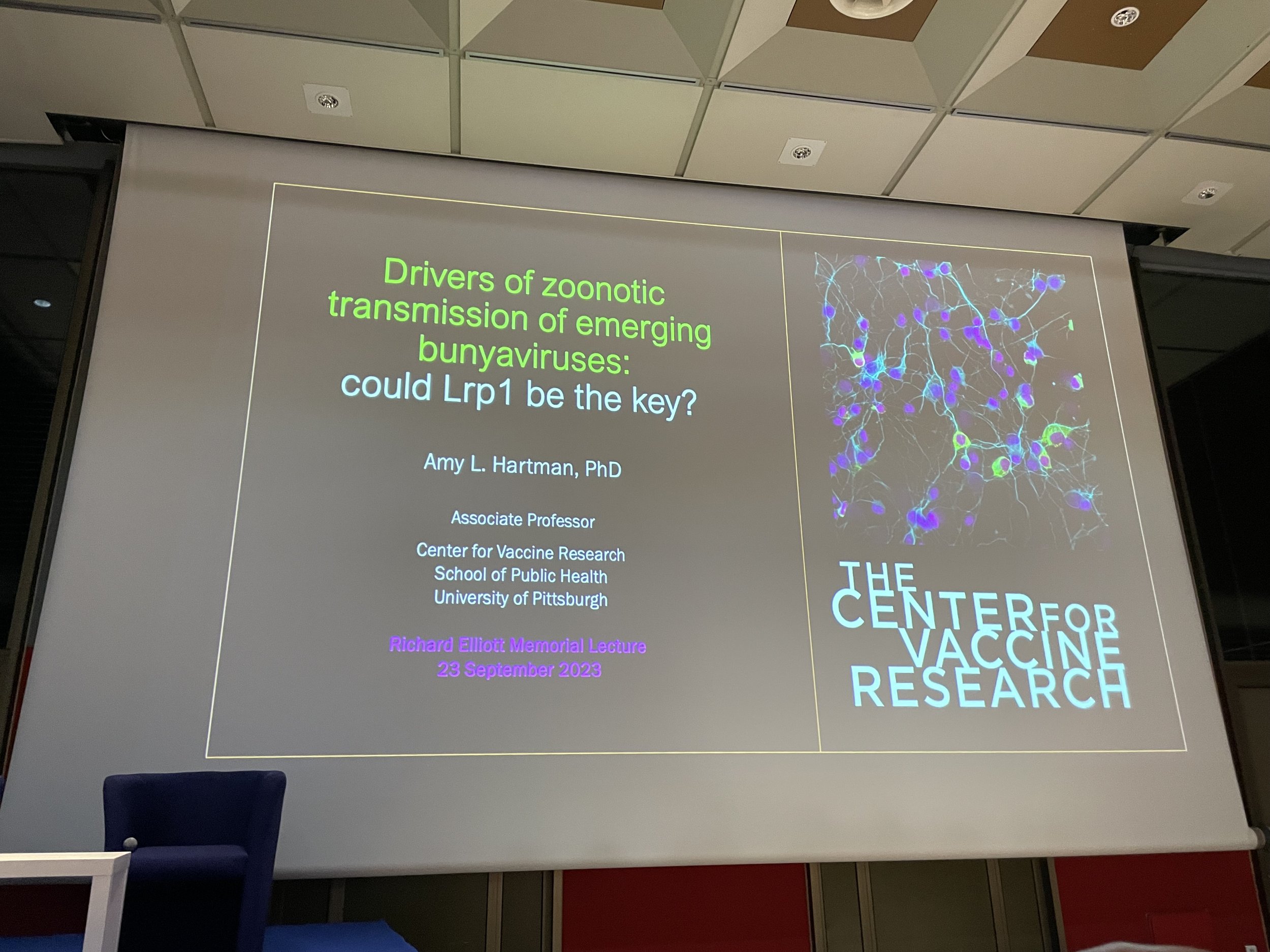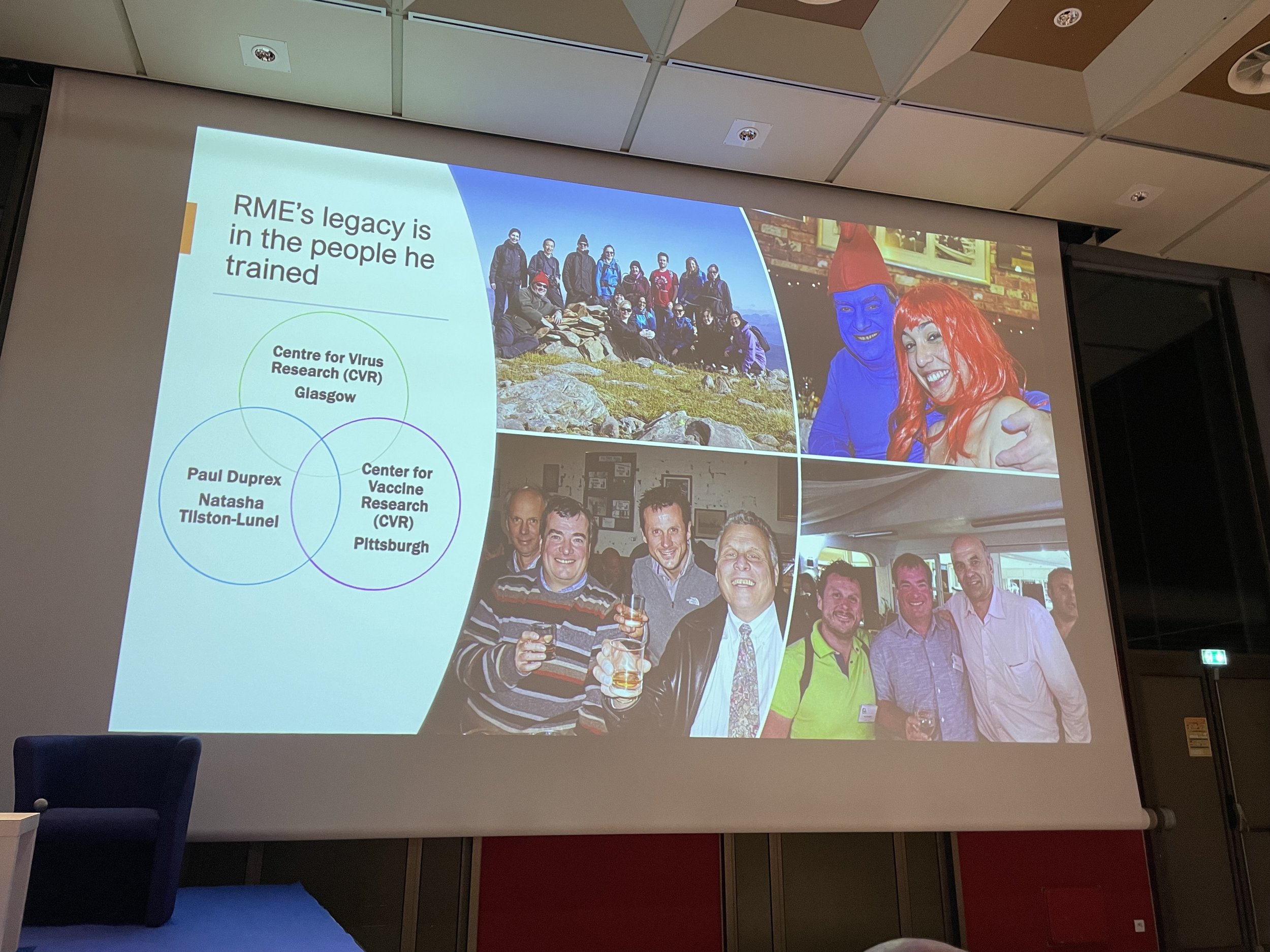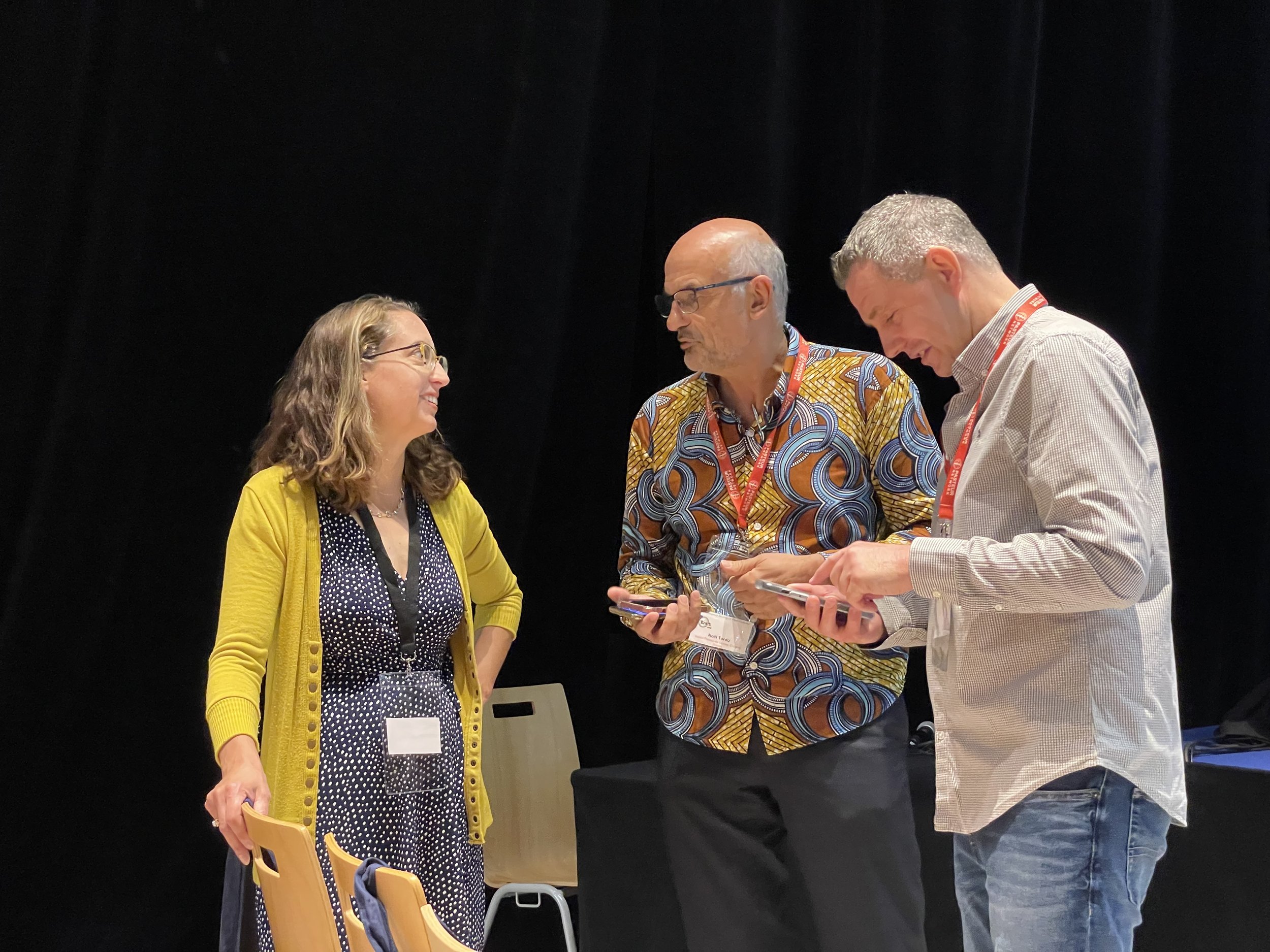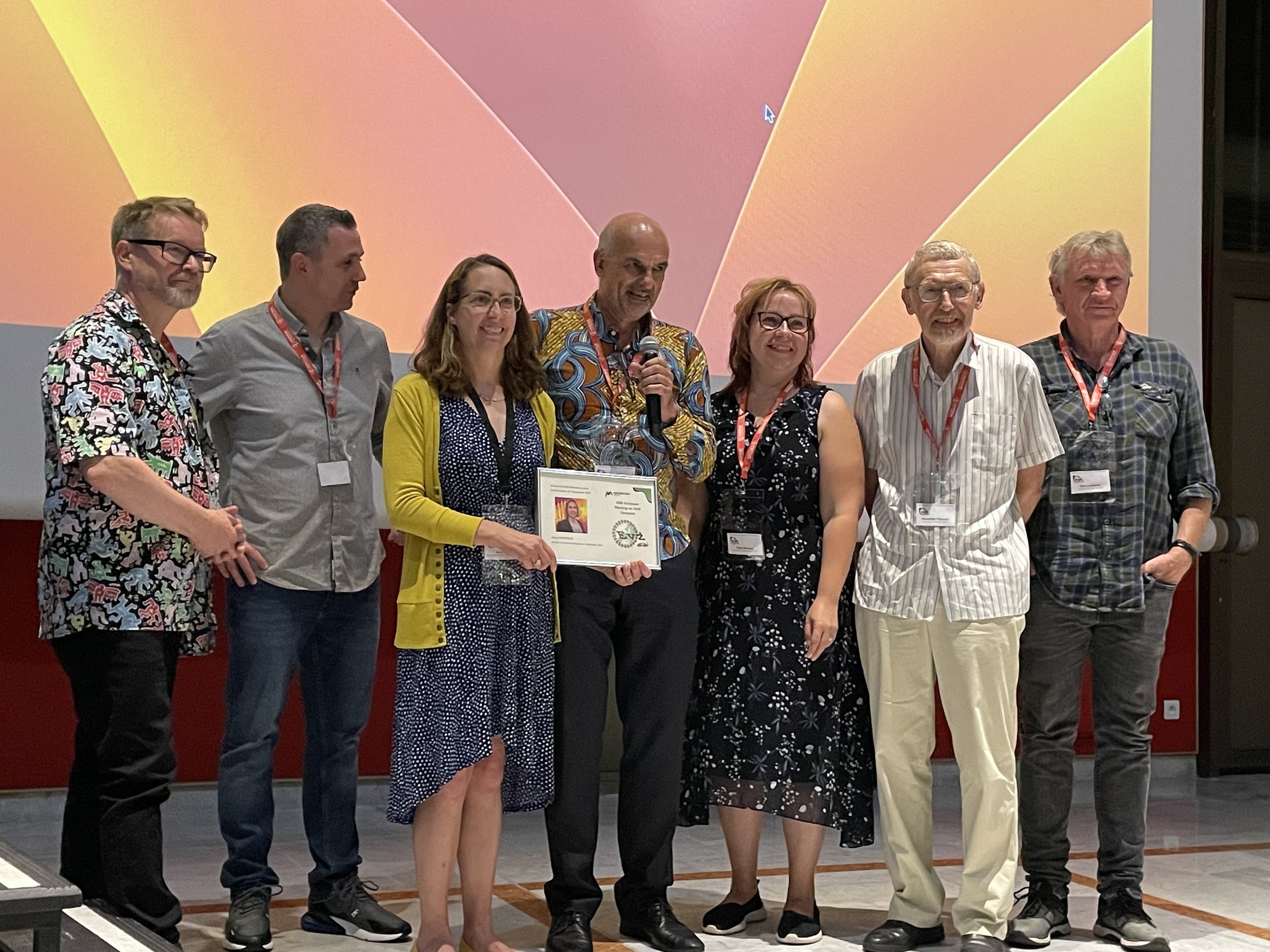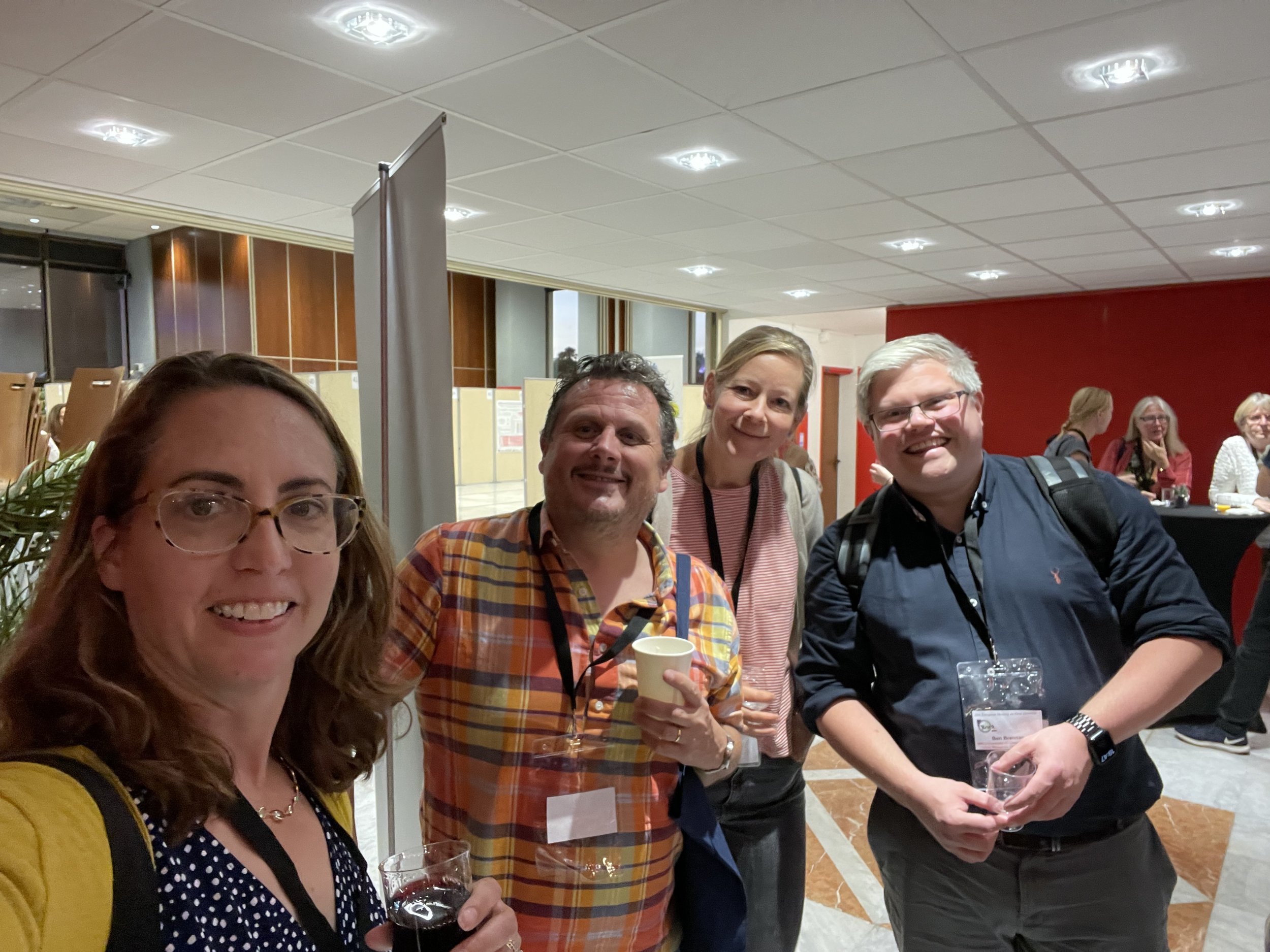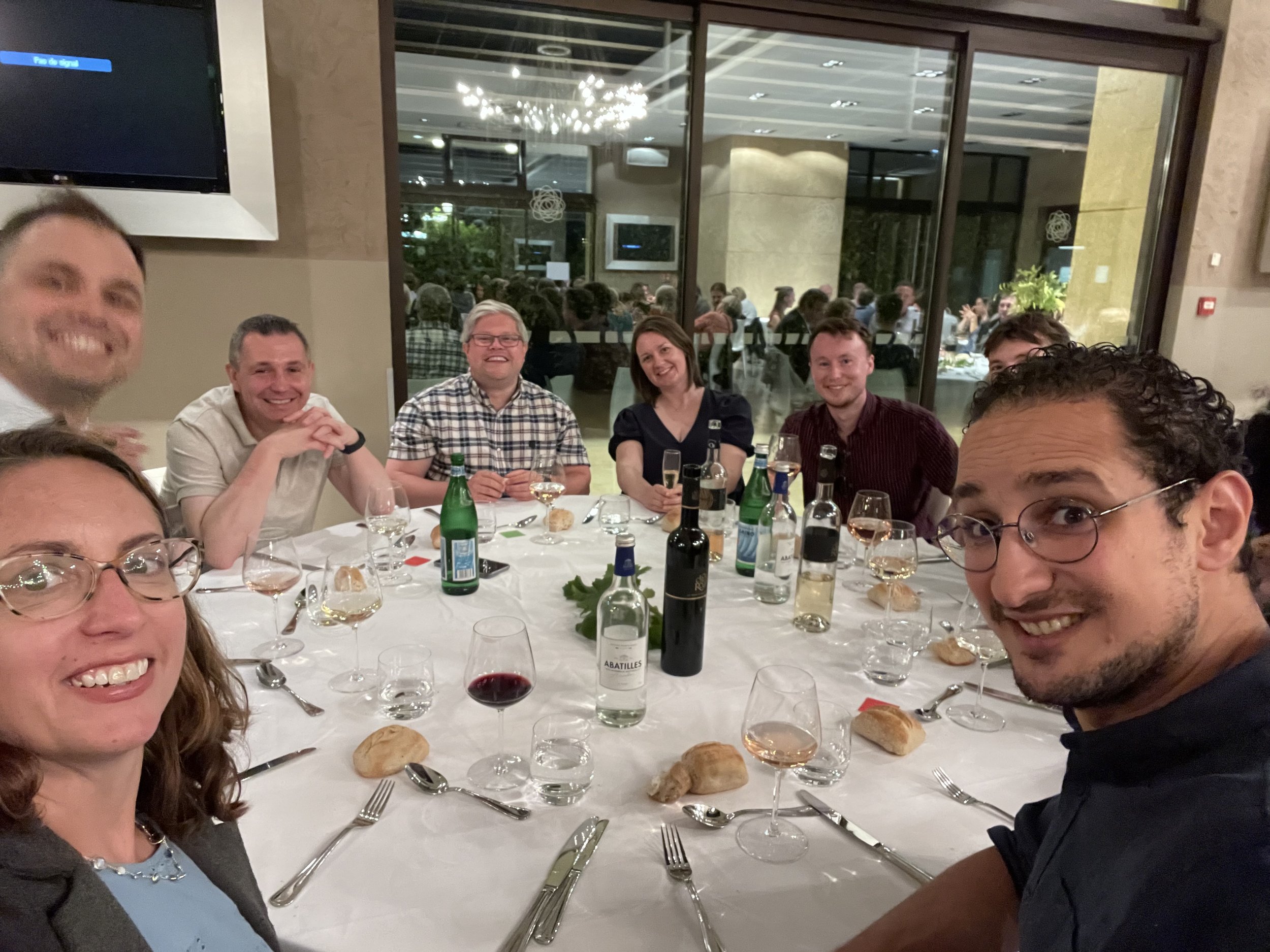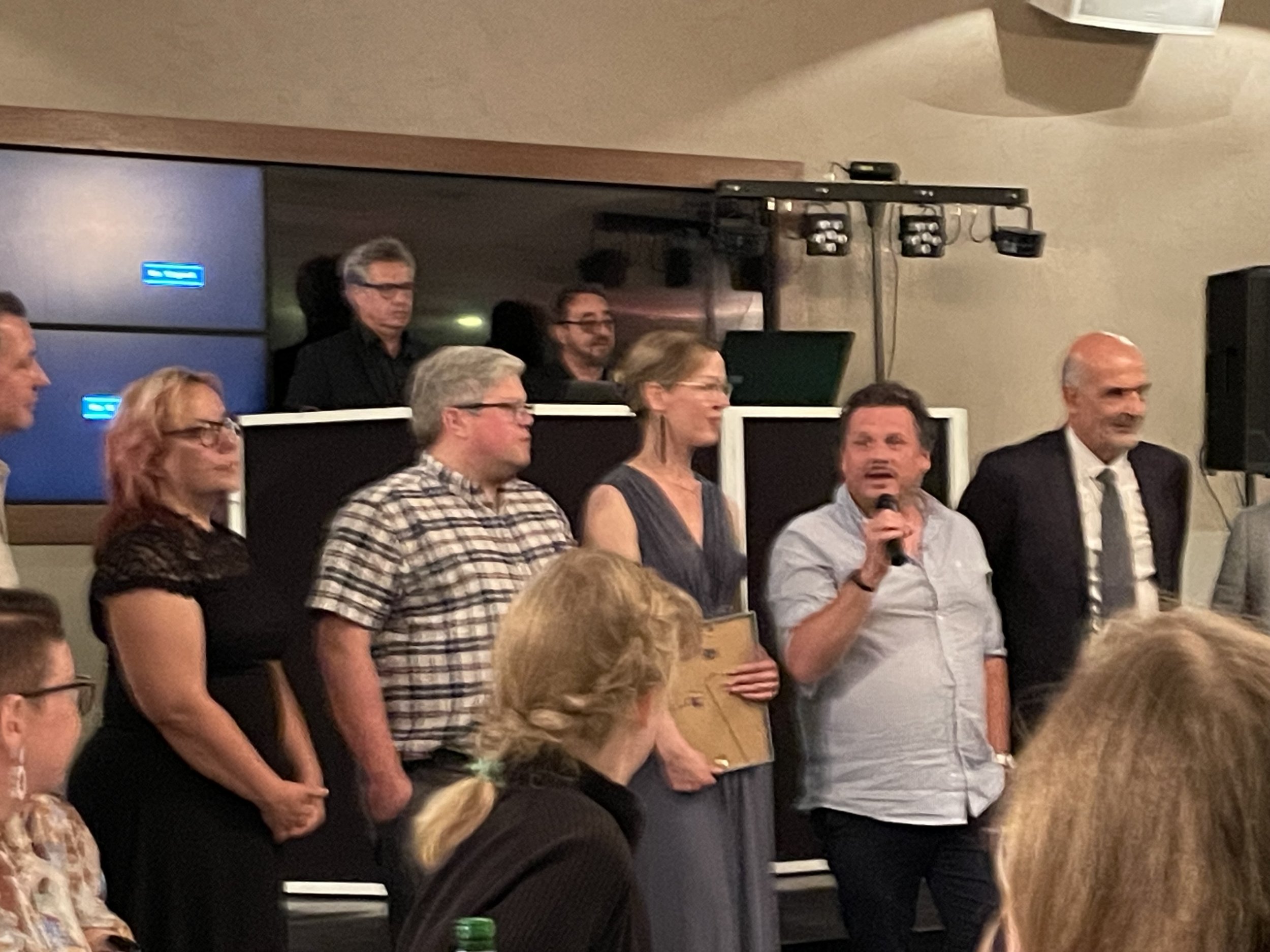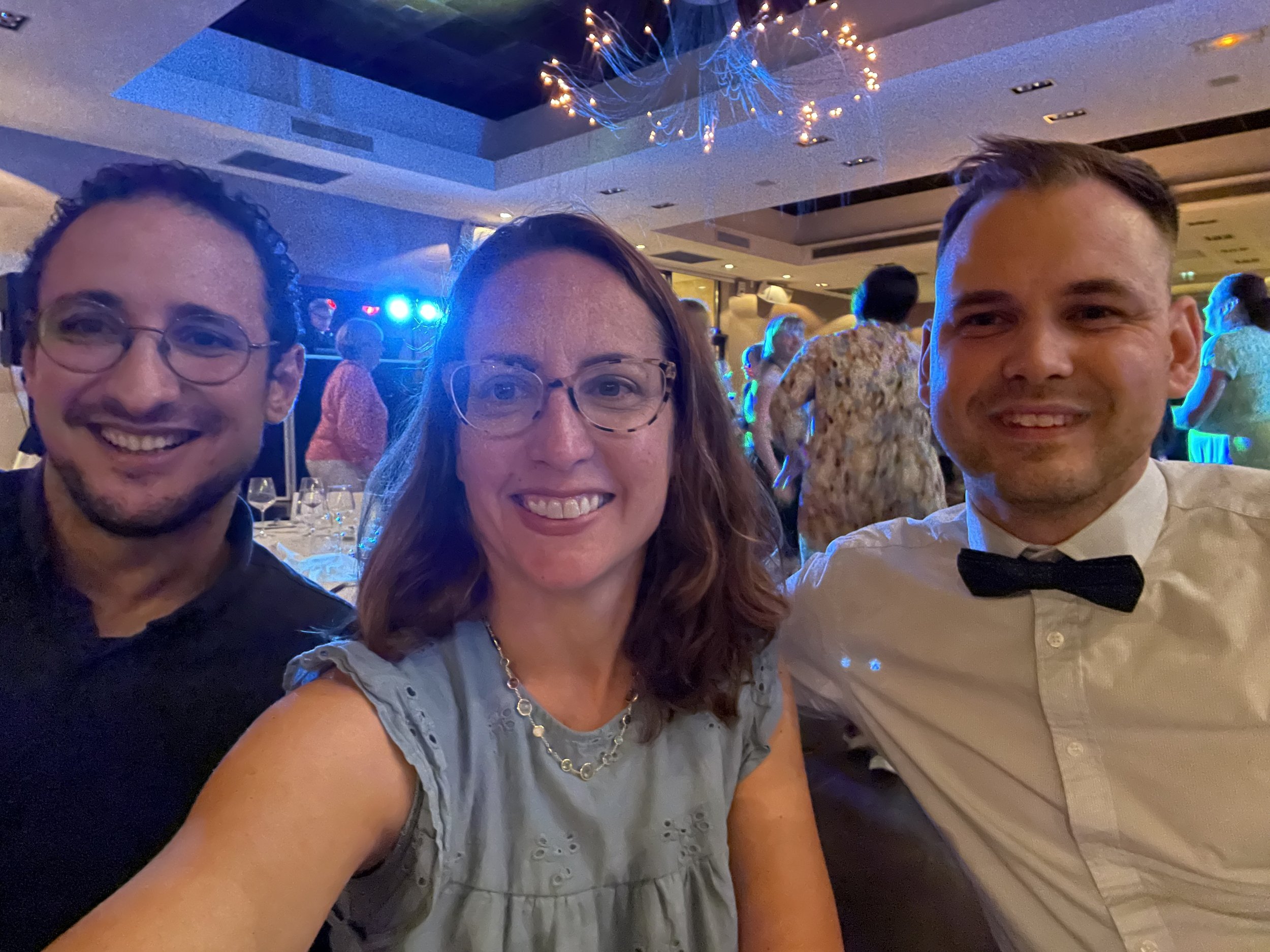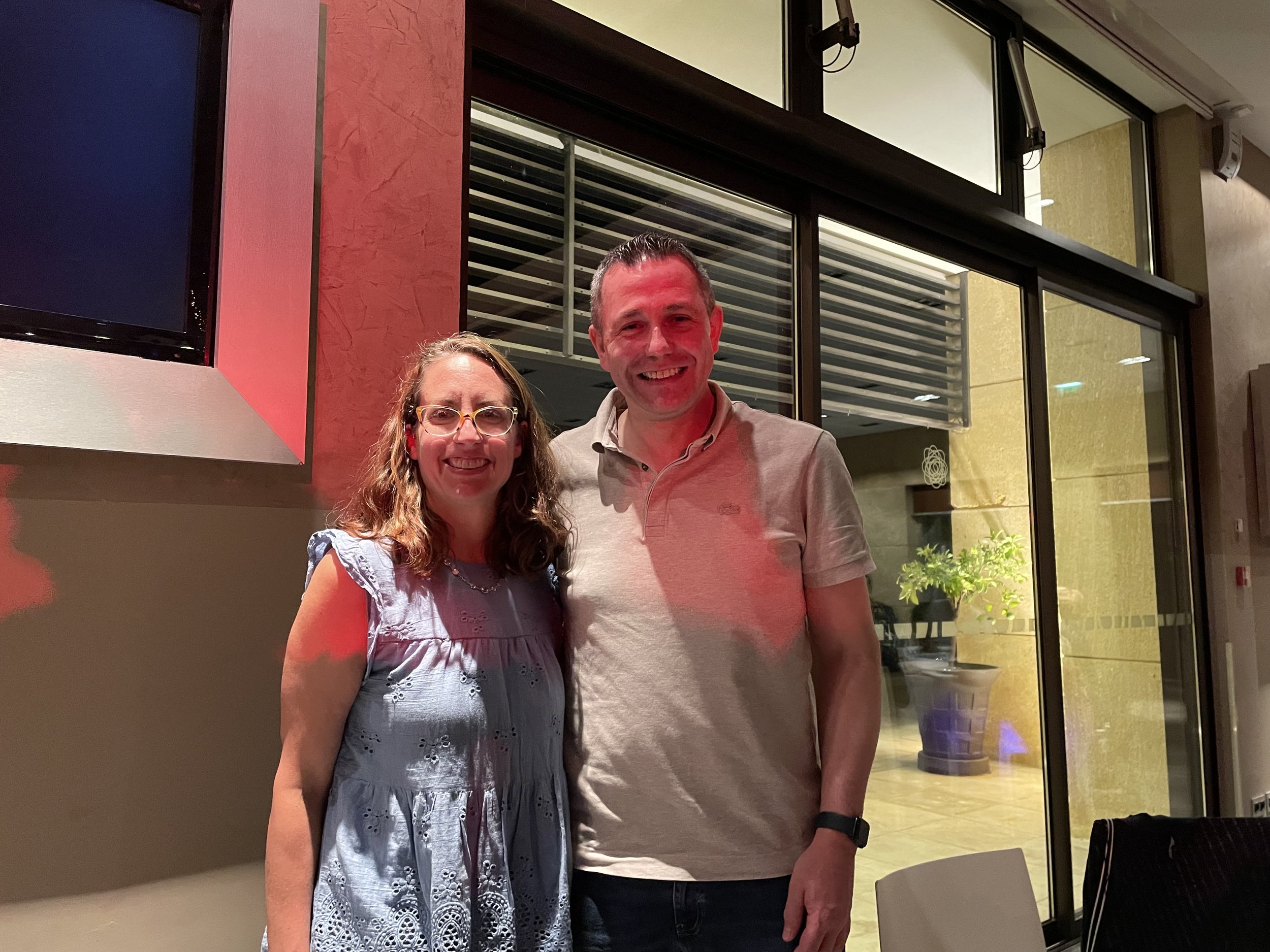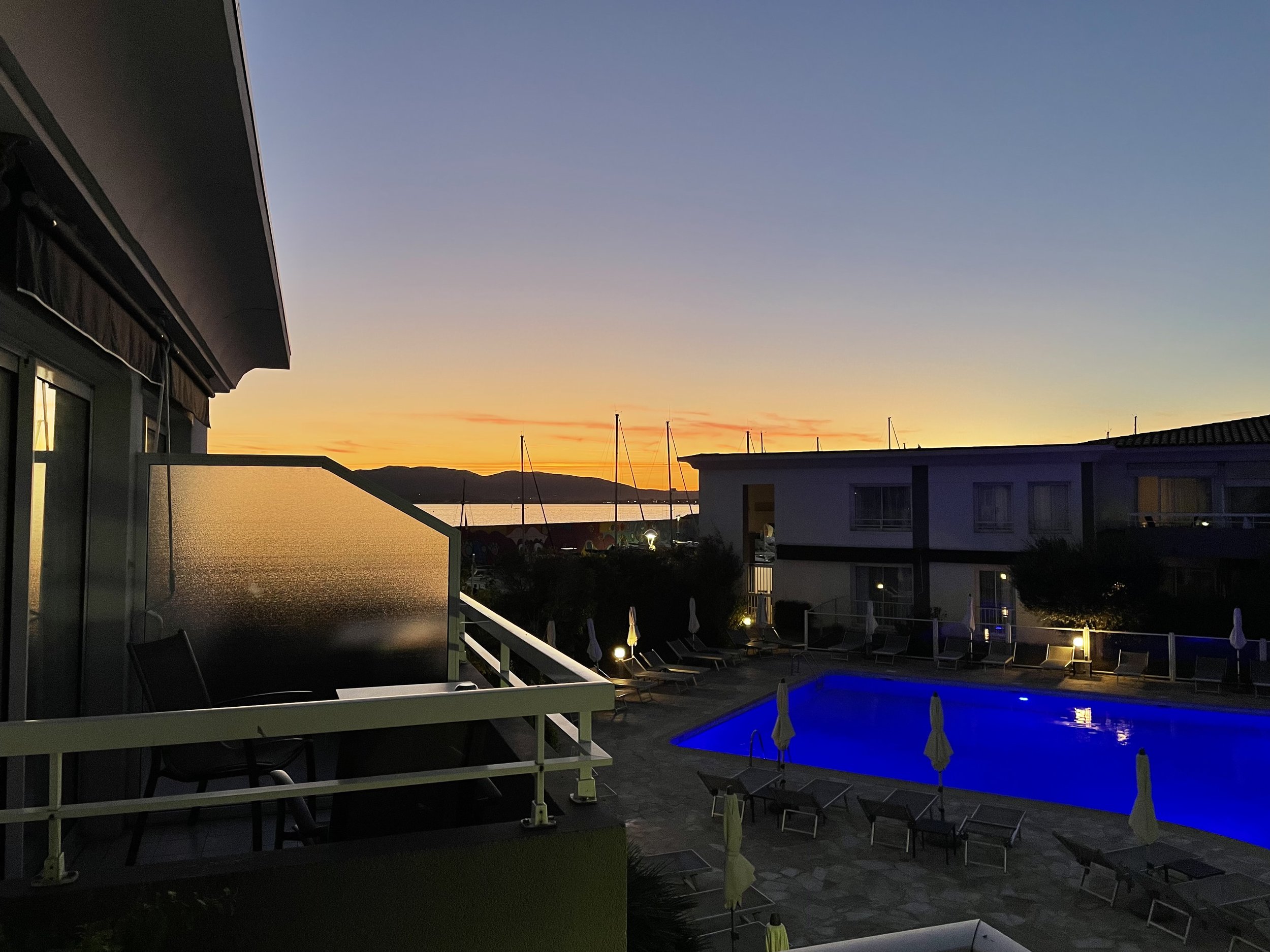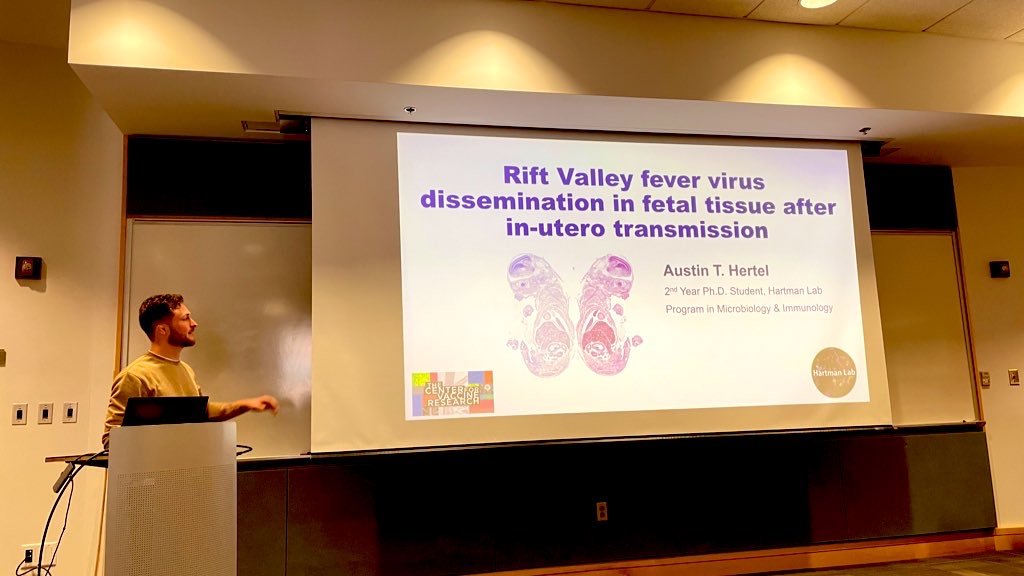I can be found on the Blue app in addition to twitter @roguerifter.bsky.social
Saint Raphael
Had a fantastic time this week at the 10th European Meeting on Viral Zoonoses in Saint Raphael, France. I gave the Richard Elliott Memorial Lecture (eeeek!!) in which I got to show off all the cool work our folks have been doing. I’ve never been to this conference before and Paul and I were two of only 4 Americans at the conference made up of mostly European scientists. It was great to connect with colleagues overseas, especially those from CVR Glasgow! Especially nice to meet new trainees from all over Europe. Here are some photos:
CVR Trainee Day 2023
CVR wanted to start an annual Trainee Day so that our trainees (students, post-docs, techs) would have an opportunity to present their work. And added benefit is that we get to see what everyone is working on. Kaleigh, Zach, and Austin all gave talks about their work. This was Zach’s first talk ever, and Austin’s first talk here at Pitt. Very proud of all of them!!
Two openings
UPDATE: We have 2 MS students rotating and a new undergrad student with us now. Will be introduced shortly!
We have two openings for this fall. We are looking for an incoming MS student to work on our bunyavirus neuropathogenesis projects.
We are also looking for a Pitt undergraduate to help us across several projects. See description below:
She’s been notified!!
We are thrilled to announce:
Cindy received the Notice of Award (NOA) this week for a K01 grant from NIAID!
This is a 5-year award to develop her own research program on vertical transmission of emerging bunyaviruses! We are so excited for her and can’t wait to see where the science goes with this!
Prevention of Rift valley fever maternal and fetal infection using a single monoclonal antibody
We have a new study out today in @NatureComms that is a collaborative effort between Cindy McMillen in my lab and Nate Chapman in Jim Crowe’s lab at Vanderbilt.
The Crowe Lab published a study in 2021 that isolated human monoclonal antibodies from humans that were either vaccinated or naturally infected with Rift Valley fever virus. One of the most potent neutralizers was RVFV-268 (IC50<1 ng/ml).
We tested the ability of RVFV-268 to protect pregnant rats from RVFV infection and in utero transmission. Cindy developed rat placenta slice cultures and showed that RVFV-268 can prevent infection of placental tissue ex vivo.
She then injected RVFV-268 into rats and showed that it rapidly crossed the placenta and can be found in the fetal tissues within 6 hours.
When pregnant rats were given RVFV-268 2 hours BEFORE RVFV infection, or +6 and +24 hours AFTER infection, both dams and fetuses were protected, with only a small amount of breakthrough viral RNA in the +24h group.
Thus, delivery of mAb RVFV-268 as late as 24 h after inoculation with RVFV can remarkably reduce both maternal and fetal infection.
Our conclusions:
• RVFV-268 rapidly reaches placental and fetal tissue after injection
• It prevents maternal and fetal infection in a dose-dependent manner.
• It also prevents vertical transmission when given up to 24 h after RVFV challenge.
This single highly potent neutralizing mAb RVFV-268 is potentially useful for either prophylaxis and/or therapy during pregnancy based on our rat model.
Liver Lrp1 KO paper
We are excited to share the latest Lrp1 paper out of our lab in collaboration with the Amarasinghe and Leung labs at WashU in St. Louis. This is a huge collaborative effort with Safder Ganaie, Takeshi Egawa, and it is the final piece of work from the PhD thesis of Maddy Schwarz.
The low-density lipoprotein receptor Lrp1 mediates efficient cellular infection by the emerging prototype bunyavirus Rift Valley Fever virus. A major unanswered question from our previous work is the biologic relevance of this interaction in vivo.
Unfortunately, we can’t make an Lrp1 KO mouse because they are not viable. So Safder Ganaie and Takeshi Egawa worked with Mike White and Xiaoxia Cui at the WUSM Transgenic, Knockout and Micro-Injection Core. They generated mice with floxed Lrp1 alleles (Lrp1f/f) and crossed them to mice expressing Cre recombinase under the albumin promotor (Alb-Cre).
Voila! These mice are knockout (KO) for Lrp1 only in cells that express albumin (hepatocytes). These are liver-specific Lrp1 KO mice. But what is the significance of the liver in RVFV infection?
RVFV is a promiscuous virus that can infect a wide range of cell types. Mice are SUPER susceptible to lethal disease and die within 3-5 days after infection with low doses of RVFV. Virus is found in many tissues, but the liver generally contains the most virus and contributes to early hepatic disease and death.
So it made sense to examine the role of Lrp1 in the liver and determine its biological significance.
We infected liver Lrp1 KO mice with RVFV by footpad injection. We compared virus spread and lethality to a control group of mice that had intact liver Lrp1. We found that the liver Lrp1 KO mice remarkably survived past the 3-5 day window of lethal hepatic disease! However, the mice eventually succumbed to neurological disease due to extensive viral replication in the brain where Lrp1 remained intact.
Equally remarkably, the livers of Lrp1 KO mice contained basically no infectious virus. Control mice had titers of 10,000 – 100,000 pfu. Without Lrp1 in hepatocytes, RVFV was unable to replicate in the liver!
Interestingly though, dissemination and replication in other tissues (spleen, lung, heart) was unaffected by lack of Lrp1 in the liver. It has been assumed that high levels of RVFV replication in the liver seeds replication in other tissues, but our data suggest that this is not the case.
Our main conclusions are:
1) Lrp1 is required for lethal hepatic RVF disease in mice.
2) Other LDLR family members are unable to compensate for lack of Lrp1.
3) Lack of Lrp1 in hepatocytes does not affect dissemination to other organs and tissues.
This was a really fun study to do and a collaborative project across Amarasinghe, Leung, and Hartman labs. Huge shoutout to @GanaieSafder for initiating this work and for continued efforts on this project with us!
Summer 2023 lab retreat
Pittsburgh Zoo & PPG Aquarium
We saw the baby Amur tigers (soooo cute!) and the 6-week old baby gorilla (even cuter!)
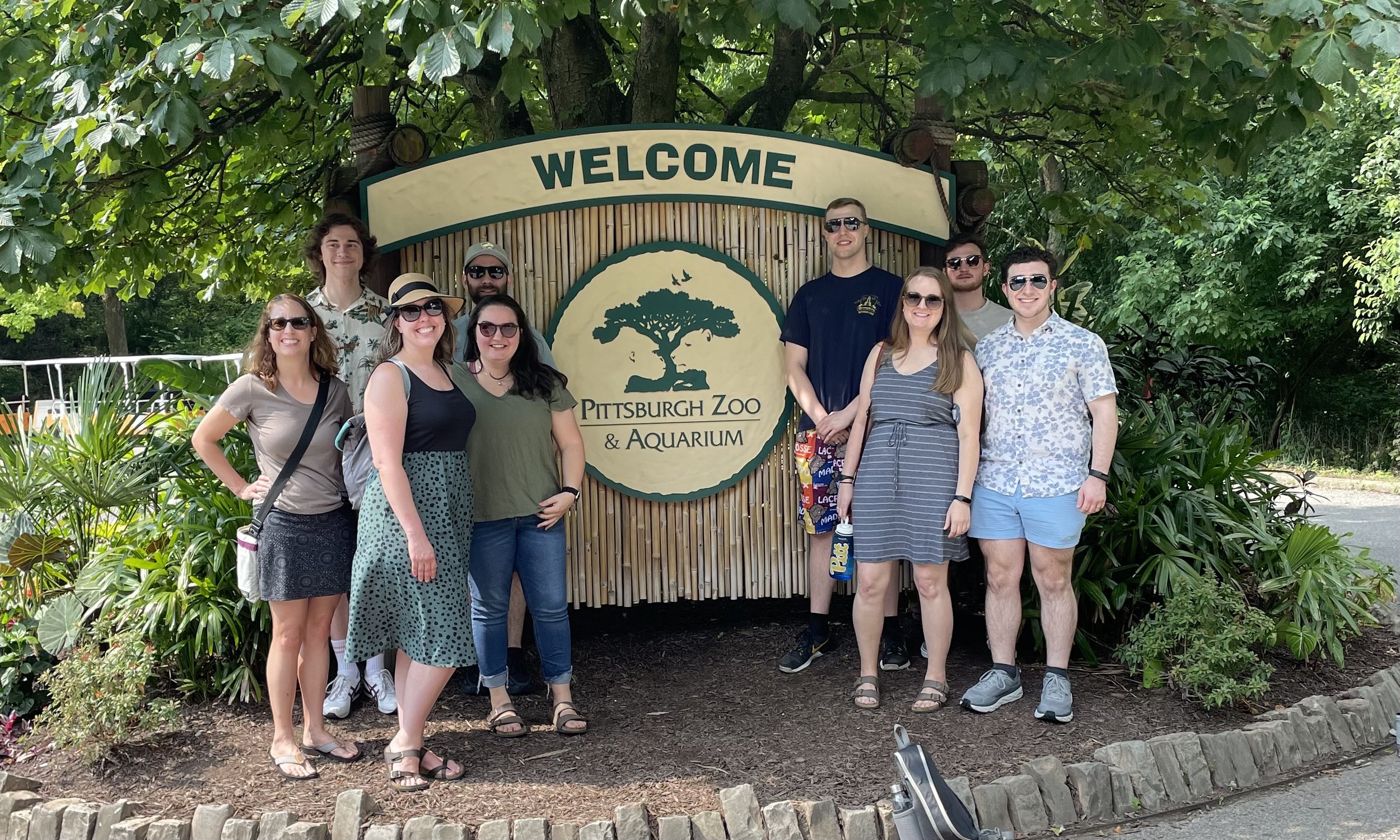
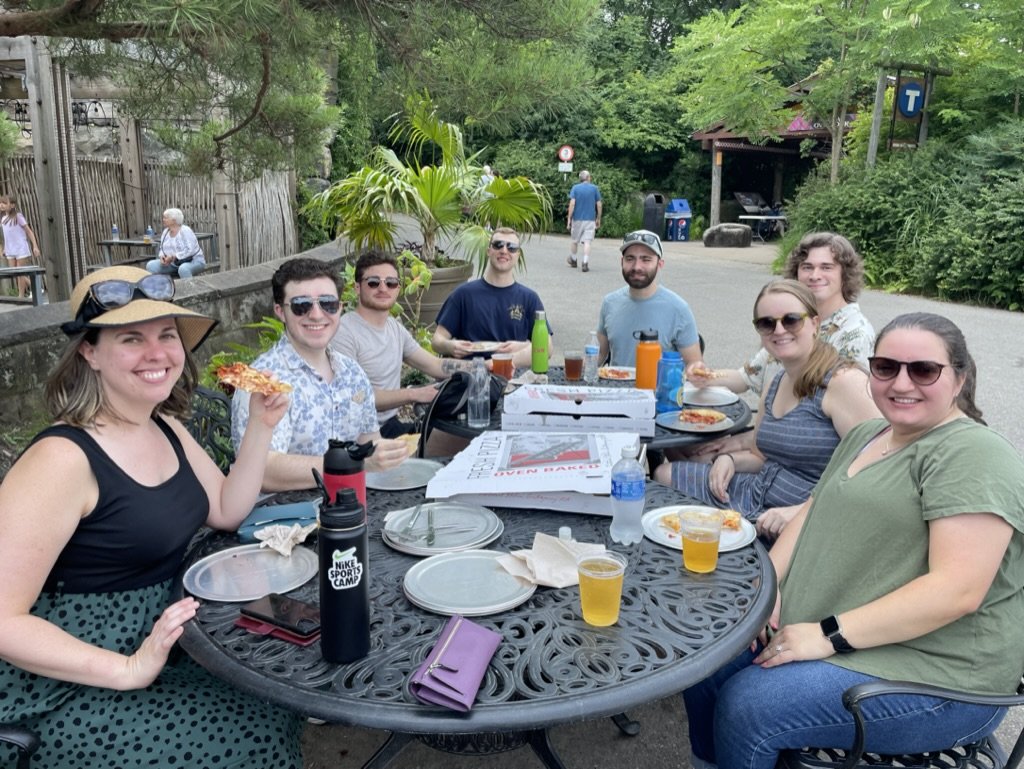
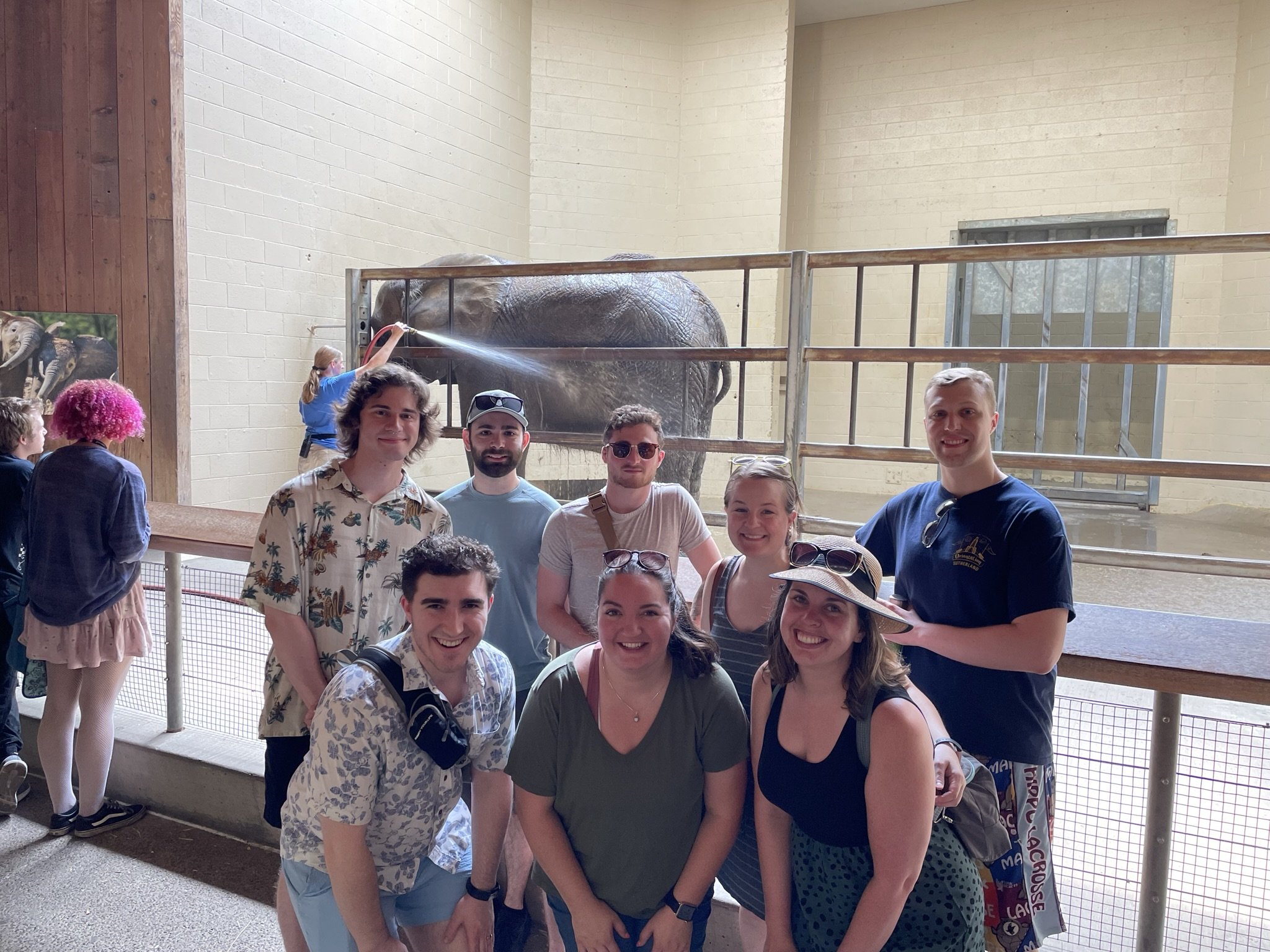
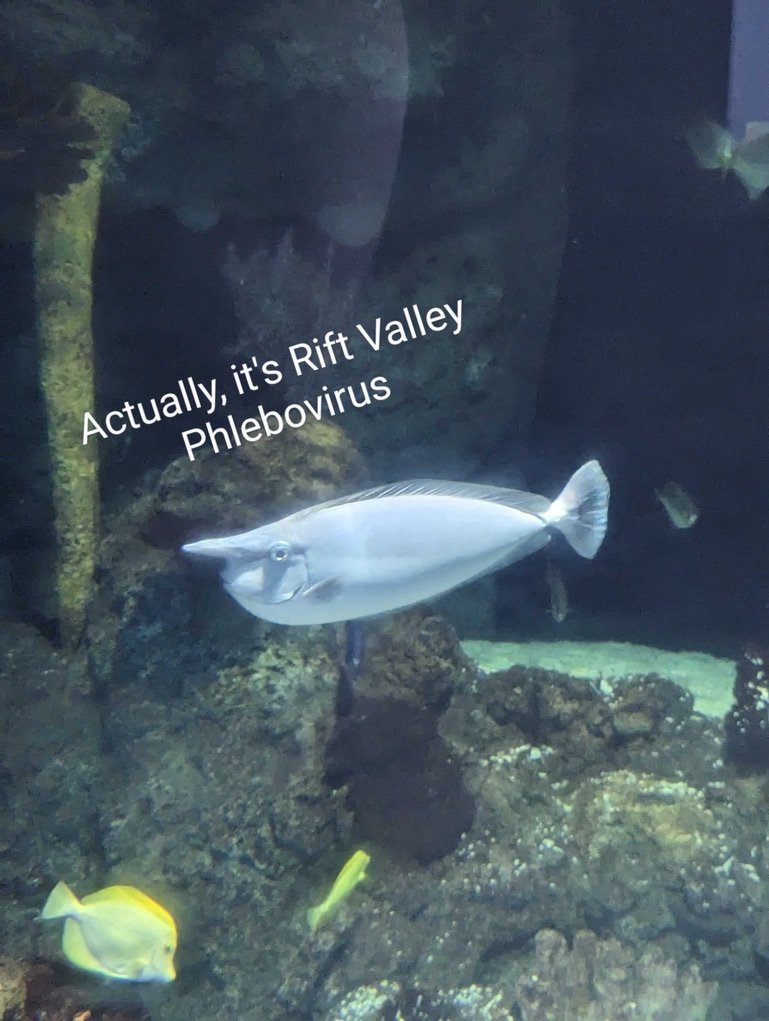
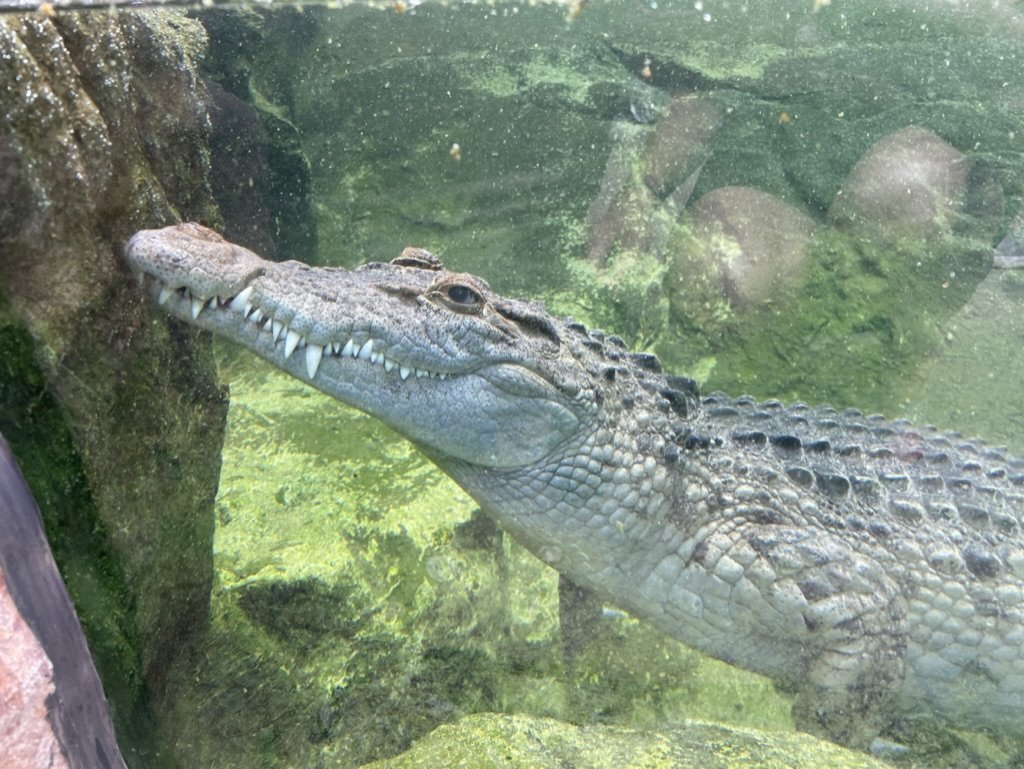
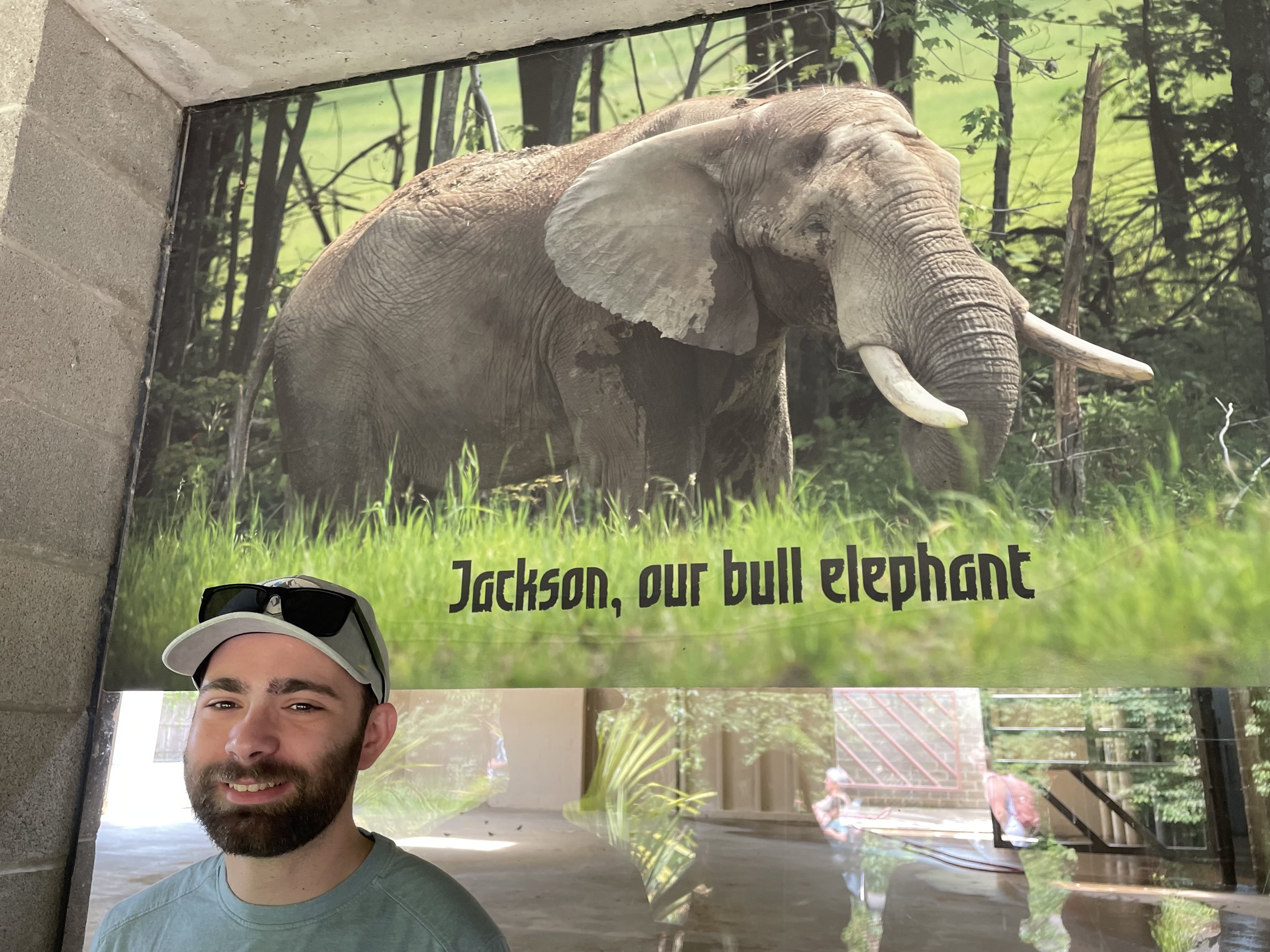
Coming soon
We have two publications that will be coming out soon. The last of Maddy’s work from her thesis will be published on July 14th! And the latest paper from Cindy is officially accepted with publication date TBD but likely in the next 4-6 weeks. More info and links to come!
ASV Wrap-Up
Zach, Kaleigh, and Rachael had a great time at ASV2023. See photos here.
I am going to try to update this blog more often. I’m not on twitter as much as I used to be...so look for more updates here!

